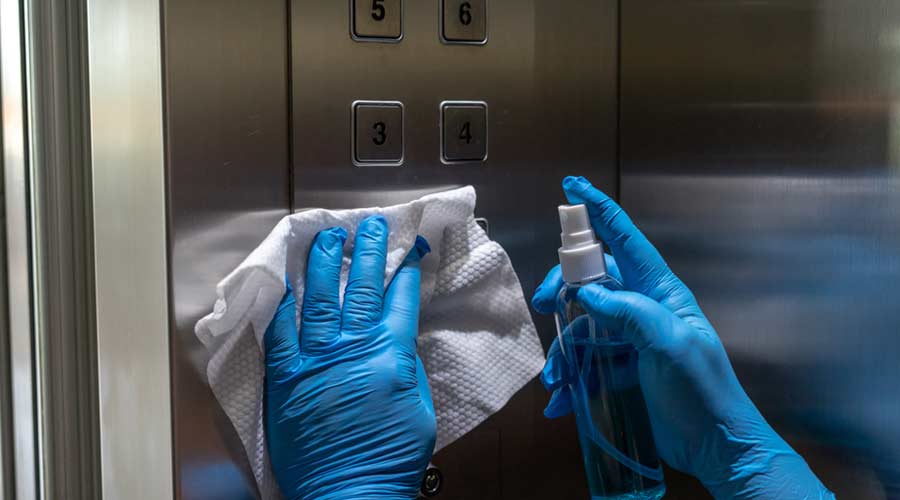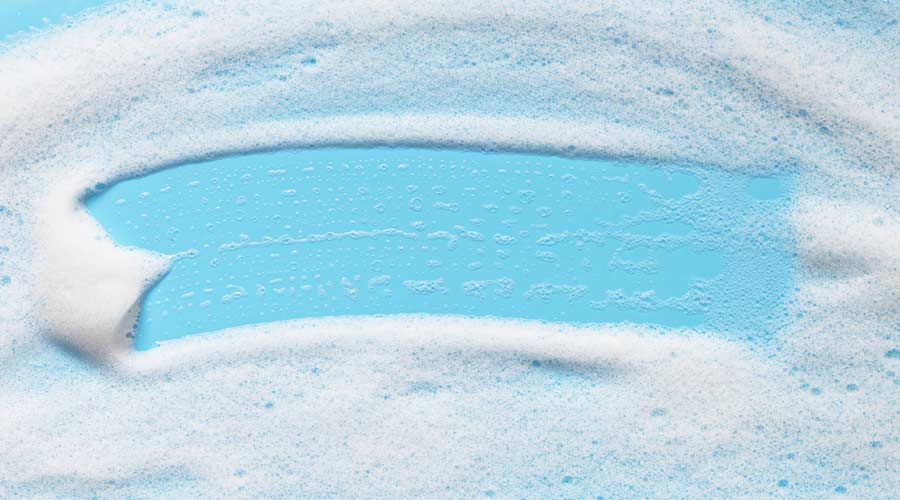
By Lauren Belskie
Carpeting is a major investment for any facility, and preserving the lifespan as well as maintaining appearance are of the utmost importance. That’s why a robust maintenance program is essential. A strong carpet floor care program involves three key phases:
1. Daily/Routine Maintenance
Daily maintenance focuses on maintaining an aesthetically pleasing appearance and preventing damage caused by foot traffic and outdoor debris. Regular vacuuming will help remove dirt, dust, and grit that can cut and wear down the carpet’s fibers over time.
According to CRI, the Carpet and Rug Institute, cleaning experts should vacuum at least once a week with a quality vacuum cleaner. However, the more foot traffic over the carpet, the more there is a need to vacuum. The general formula is:
- Vacuum daily in high-traffic areas.
- Vacuum twice weekly in medium-traffic areas.
- Vacuum weekly in light-traffic areas, using attachments at carpet edges.
2. Periodic Maintenance (Interim Maintenance)
Periodic maintenance, also known as interim maintenance, is performed less frequently than daily care but more often than restorative care. This phase helps refresh carpet fibers, remove embedded dirt, and reduce the need for intensive restorative treatments. Techniques include carpet encapsulation or bonnet cleaning.
3. Restorative Maintenance
When carpets show visible spots, stains or wear that can no longer be addressed with periodic cleaning, restorative maintenance is required. This is typically done through hot water extraction. Restorative treatment is expensive and time- and labor-intensive but essential for preserving the carpet’s integrity and extending its service life.
The CRI, the Carpet and Rug Institute, recommends professionally deep cleaning carpets every 12 to 18 months to remove embedded dirt and grime. Seal of Approval-certified cleaners are recommended and sometimes required by the manufacturer.
All three of these phases of floor maintenance play a crucial role in preserving the longevity and appearance of commercial floors. However, periodic maintenance is often the most overlooked step. Many janitorial teams tend to focus primarily on daily upkeep and full restorative procedures, unintentionally skipping the interim maintenance that helps bridge the gap.
Why Interim Carpet Maintenance Matters
Without regular periodic care, carpets can dull faster, accumulate deeper soil, and require more frequent and labor-intensive restoration — ultimately increasing maintenance costs and downtime.
While deep cleaning is essential, waiting too long between cleanings can lead to permanent damage, unpleasant odors, and an unprofessional appearance.
Interim carpet maintenance is a proactive approach that extends the life of carpets while maintaining a clean and healthy environment.
What Is Interim Carpet Maintenance?
Interim carpet maintenance refers to scheduled light cleaning methods that occur between deep extractions. It includes vacuuming, spot cleaning, and low-moisture carpet cleaning techniques like encapsulation carpet cleaning. This process helps maintain the appearance, durability, and hygiene of carpets without the downtime required for deep cleaning.
Key Benefits of Interim Carpet Maintenance:
Extends Carpet Lifespan — Frequent foot traffic grinds dirt and debris into carpet fibers, leading to premature wear and tear. Regular interim maintenance prevents this buildup, preserving the integrity of the carpet and delaying costly replacements.
Improves Indoor Air Quality — Carpets trap dust, allergens, and bacteria that can circulate in the air, potentially triggering respiratory issues. Routine vacuuming and low-moisture cleaning help remove these pollutants, contributing to healthier indoor air quality for employees and visitors.
Reduces the Need for Frequent Deep Cleaning — Deep carpet extraction is necessary but can be time-consuming and disruptive. Interim maintenance minimizes the accumulation of dirt and stains, reducing the frequency and intensity of deep cleanings while keeping carpets consistently fresh.
Enhances Aesthetic Appeal — A stained or dingy carpet can create a negative impression on customers, clients, and employees. Regular maintenance ensures carpets look cleaner and well-maintained, reflecting positively on the business.
Saves Money in the Long Run — Neglecting carpet care leads to premature fiber breakdown and costly replacements. Implementing interim maintenance techniques can reduce overall cleaning costs by keeping carpets in good condition and extending their usable life.
5 Interim Carpet Maintenance Methods
1. Frequent Vacuuming
Using a high-efficiency vacuum with a HEPA filter removes loose dirt and allergens before they settle into carpet fibers. Daily vacuuming in high-traffic areas prevents deep-set grime.
2. Spot Cleaning for Stains
Immediate stain removal prevents permanent discoloration and fiber damage. Using the right cleaning solutions and agitation techniques ensures effective stain removal without harming the carpet.
3. Low-Moisture Encapsulation Cleaning
During the encapsulation process, an encapsulation cleaning solution is applied to carpeting using either a pump-up sprayer, a dry foam machine, or an encapsulation machine. Once it has been worked into the carpet, allow 10-15 minutes for the solution to sit and dry. This is when the magic happens.
Encapsulation cleaning is the newest interim carpet cleaning and regarded as the safest and most effective.
4. Bonnet Cleaning
A rotary machine with a bonnet pad lifts surface dirt and brightens carpet fibers. This quick-drying technique is often used where carpets must be ready for foot traffic immediately.
However, keep in mind that carpet bonneting “may void manufacturer’s warranty”. Some mills believe that bonnets unwind the fibers, in turn ruining the carpet over time.
5. Preventative Measures
Stop dirt at the door by installing proper entryway matting programs both inside and outside your facility. Also, routinely empty air filters to reduce airborne dust particles.
How Often Should Teams Perform Interim Carpet Maintenance?
CRI, the Carpet and Rug Institute, states the frequency depends on foot traffic, industry type, and carpet material. General recommendations include:
Daily – Vacuuming high-traffic areas
Weekly – Spot cleaning spills and stains
Monthly – Low-moisture or bonnet cleaning
Quarterly – More intensive interim maintenance, such as encapsulation cleaning
Interim carpet maintenance is a cost-effective, time-efficient strategy to keep carpets clean, extend their lifespan, and maintain a healthy indoor environment. By implementing regular vacuuming, spot cleaning, and low-moisture cleaning methods, businesses can reduce long-term costs, improve air quality, and create a welcoming space for employees and visitors.
Lauren Belskie is a major contributor and the primary editor for the Imperial Dade Learning Center, a platform designed to answer common questions, provide insights on trends and offer creative solutions to help businesses create safer, healthier and cleaner facilities. She is the Marketing Operations Manager at Imperial Dade, producing articles, videos, trainings, and other educational content targeted to the janitorial services market.
posted on 2/25/2025

 The Down and Dirty on Cleaning in Virus Season
The Down and Dirty on Cleaning in Virus Season How Surfactant Use is Expanding in Commercial Cleaning
How Surfactant Use is Expanding in Commercial Cleaning Maximize Your Margins: Learn How to Automate Pricing and Track Rebates
Maximize Your Margins: Learn How to Automate Pricing and Track Rebates